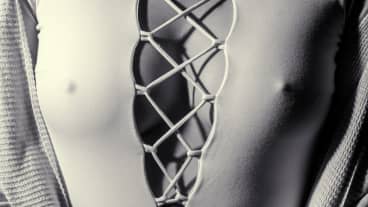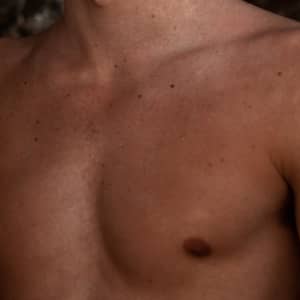 Inverted Nipple Repair
Inverted Nipple RepairWhy You Should Stay Abreast Of This Nipple Projection Procedure
Whether it’s for aesthetics or breastfeeding, there are surgical and non-surgical solutions to treat inverted nipples.
Nipples, we all have them, and they are entirely unique. Aside from differences in size, shape, and color, protrusion is another characteristic that varies from person to person. For some, it doesn’t happen often, if at all. No, this isn’t an excerpt from a Sex And The City episode — it’s a concern women and men face. It is estimated that 10 to 20 percent of the female population experiences inverted nipples, and there are many ways to address it. Whether the desire for a more projected look is for aesthetic or functional (think: breastfeeding) reasons, we’re breaking down the treatment options for inverted nipples.
What Are Inverted Nipples?
Before we get started, it’s important to note that inverted nipples are a benign condition if you’ve always had them. If you experience a sudden nipple inversion, however, it is important to consult with a medical professional, as it could be a symptom of breast cancer or another medical condition.
Anatomically speaking, the nipple is the part of the areola (the circular ring of pigmented skin around the nipple) that typically protrudes through stimulation or a decrease in temperature. If that doesn’t happen, it may be because the nipple is inverted. “Inverted nipples may be congenital (many patients are born with them) or can be caused by breastfeeding (due to milk duct scarring), trauma, cancer, surgery, or infection,” says Umbareen Mahmood, MD, a New York-based board certified plastic and reconstructive surgeon.
To better understand the difference between permanently inverted nipples and those that lay flat on occasion, the technical categorization is as follows:
- Grade 1: “The nipple is either flat or mildly inverted,” Dr. Mahmood explains. “It is easily manually everted, can become everted by touch or temperature, and it maintains its projection.”
- Grade 2: “The nipple is manually retractable, but with difficulty, and the nipple tends to retract again immediately,” she says.
- Grade 3: The most severe form, Dr. Mahmood shares that this level of inversion does not allow for manual retraction and “breastfeeding is unlikely.”
No matter where someone falls on the scale, there are options for those who want a more everted appearance that can be done at home, in a piercing studio, or with the help of a medical professional.
Non-Surgical Solutions for Inverted Nipples
Depending on your anatomy, you may or may not be aware that there’s a whole world of nipple protruding techniques and devices on the market. Suction products, massage options, and even piercings claim to help the nipple protrude.
- At-Home Exercises: For those with grade 1 or grade 2 levels, Dr. Mahmood recommends “manual at-home exercises that place pressure at the base of the nipple or suction cup devices that are placed over the nipple and gently stretch the ducts over time.”
- Nipple Piercings: Nipple piercings with barbells are another non-surgical treatment to keep nipples everted for grades 1 and 2, Dr. Mahmood notes. The piercing is not nearly as painful as it sounds and should heal in a few months if proper protocol (wearing a compression garment like a sports bra for the first few days and cleaning regularly) is followed. Another benefit? Many cite an increase in sensitivity to the area after piercing.
If the at-home methods aren’t working and you aren’t interested in a piercing, surgery may be the best solution.
Surgical Solutions for Inverted Nipples
Inverted nipple repair is a relatively simple surgery performed under local anesthesia that offers permanent results. A small incision is made at the base of the nipple so that “the constricted and tethered ducts [can be] released,” Dr. Mahmood explains. A suture is then placed at the base to support the released nipple. “Pain is very minimal, but there may be some soreness,” she says. Work can be resumed within a few days but patients are “advised to abstain from vigorous exercise for two weeks.”
Some patients may experience a loss of sensation after surgery, though it is rare. “Nipple sensation is rarely affected after the surgery,” Dr. Mahmood says. Breastfeeding is another consideration. “Nipple stretching techniques for grade 1 and grade 2 do not affect breastfeeding, as milk ducts are left intact,” she explains. “For grade 3, the constricted ducts need to be divided, which will impact breastfeeding.” While diminished milk supply is a potential side effect, “things like pumping as well as medications that stimulate milk production can help women breastfeed,” she adds.
At the end of the day, women who wish to breastfeed need to weigh their options. “It depends on how critical breastfeeding is to them,” Dr. Mahmood says. “If they are a grade 3, they may have zero chance at breastfeeding whereas, with the surgery, they may be able to.”
The Takeaway
Inverted nipples are often a genetic condition that is not a cause for concern — unless it happens suddenly. In such cases, breast checks are necessary. While there are non-surgical solutions for those with grade 1 and grade 2 inversion, women who are grade 3 and want a chance to breastfeed may consider an inverted nipple repair surgery.
More Related Articles
Related Procedures

AI Plastic Surgeon™
powered by'Try on' aesthetic procedures and instantly visualize possible results with The AI Plastic Surgeon, our patented 3D aesthetic simulator.


